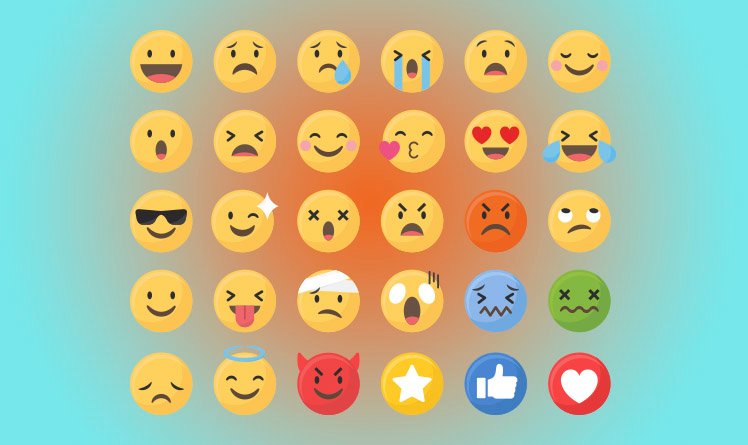What is the difference between emotion and feeling?

|
Getting your Trinity Audio player ready...
|
Emotion and feeling are intrinsic aspects of the human experience, influencing our social interactions, decision-making, and overall well-being. Although we often use these terms interchangeably, they refer to distinct processes in the world of psychology.
In this article, we will explore the difference between emotion and feeling, as well as their importance in our daily lives.
What are emotions?
Emotions are brief and intense reactions to specific stimuli, usually triggered automatically and unconsciously. They involve physiological responses, such as changes in heart rate, breathing and brain activity, and are strongly linked to survival instincts. As such, they are involuntary events, like a whirlwind of sensations that arise in response to something that pleases, displeases, surprises or threatens us.
Emotions are so rapid and automatic that we often react before we're even consciously aware of what we're feeling. This is because emotional processing occurs in older, more primitive brain regions, such as the amygdala, which prepares us for immediate action—whether it's fight, flight, or freeze. This response was essential to the survival of the human species and, to this day, shapes our most instinctive reactions.
Characteristics of emotions: A whirlwind of sensations
- Automation: They arise quickly and involuntarily, without conscious control.
- Brevity: They are usually short and fleeting, lasting only a few seconds or minutes.
- Universality: They are shared by all human beings, regardless of culture or context.
- Physiological monitoring: They cause changes in the body, such as changes in heart rate, breathing, body temperature and facial expressions.
“Emotions are automatic, physiological reactions triggered by external stimuli, regulated by the brain’s limbic system.”
What are feelings?
Feelings, on the other hand, are more lasting and complex experiences that arise from the conscious interpretation of emotions. They involve cognitive processes and can be influenced by past experiences, personal values, and social context.
Thus, unlike emotions, feelings require the brain to process information in a more sophisticated way, integrating memory, language, and reflection. prefrontal cortex — especially the left side — is responsible for this processing, helping to create internal narratives such as "I'm hurt because I was ignored" or "I feel gratitude because I was valued." Therefore, feelings can intensify over time and even persist even after the initial emotion has passed.
Thus, feelings give meaning to physiological reactions, influenced by our beliefs, values, memories and experiences.
Characteristics of feelings: A subjective and complex experience
- Subjectivity: They are personal and unique, varying from person to person.
- Duration: They can last hours, days, weeks or even years.
- Cultural influence: They are shaped by the culture and social context in which we live.
- Complexity: They involve a range of sensations, thoughts and behaviors.
“Feelings are conscious and lasting interpretations of emotions, shaped by thoughts, memories, and values.”
How emotions and feelings manifest themselves
Emotions manifest themselves not only in our mental state, but also in our body. For example, when we feel fear, we may experience an increase in heart rate, sweating, and muscle tension, preparing us to react quickly to a perceived threat.
In turn, feelings are more related to our thoughts and interpretations of emotional experiences. Similarly, after feeling fear when encountering a spider, we may develop a lasting feeling of aversion to spiders, even when we are no longer in imminent danger.
The relationship between emotion and feeling
Interaction and mutual influence
Although distinct, emotions and feelings are intrinsically linked and often influence each other. In this way, an initial emotion can trigger a series of subsequent feelings, while our feelings and thoughts can shape how we perceive and respond emotionally to future events.
Distinction between neural processes
Neuroscientifically, emotions and feelings involve different neural circuits in the brain. Emotions are often associated with subcortical regions, such as the limbic system, responsible for immediate emotional responses. On the other hand, feelings involve higher cortical areas, such as the prefrontal cortex, responsible for emotional regulation and cognitive interpretation.
Furthermore, neuroimaging studies show that while emotion activates areas such as the amygdala and hypothalamus (linked to reaction and survival), feelings involve broader brain networks—such as the anterior cingulate cortex, which helps assign meaning to emotions. This reinforces the idea that emotions and feelings differ not only in how we experience them, but also in how the brain processes them.
“Emotions and feelings activate different brain regions: emotions activate the limbic system; feelings activate the prefrontal cortex.”
The importance of understanding the difference
Emotional self-perception
Understanding the distinction between emotion and feeling is essential, as it allows us to develop greater emotional self-awareness, more accurately identifying our emotional reactions and the underlying feelings that arise from them. In this sense, we can respond more consciously and adaptively to life's challenges.
Development of emotional intelligence
THE emotional intelligence, the ability to recognize, understand, and manage our own emotions, as well as the emotions of others, is fundamental to emotional well-being and interpersonal success. Thus, understanding the difference between emotion and feeling is a crucial step in developing this emotional competence.
Practical applications in everyday life
Emotional management
Recognizing our emotions and understanding the feelings that arise from them allows us to adopt effective strategies for dealing with stress, anxiety and other emotional issues. This may include breathing techniques, meditation and assertive communication.
Cultivating healthy relationships
Understanding the difference between emotion and feeling is also essential to building healthy interpersonal relationships. Thus, communicating our feelings clearly and compassionately to others fosters greater understanding and emotional connection.
Therefore, developing the ability to observe our emotions and name our feelings opens the door to greater emotional self-regulation. This practice, known as emotional labeling, is widely used in therapies such as DBT (Dialectical Behavioral Therapy) and can reduce the intensity of negative emotions, promoting mental clarity and well-being.
“Identifying and naming emotions reduces their intensity and strengthens emotional intelligence.”
The role of emotions and feelings in human life: Influencing behavior and decisions
Emotions and feelings play a crucial role in human life, influencing:
- Behavior: Emotions can either drive us to act or paralyze us. Feelings, in turn, can influence the way we behave in different situations.
- Decisions: Emotions can influence our decisions, both positively and negatively. For example, happiness can lead us to make riskier decisions, while sadness can make us more hesitant.
- Relationships: Emotions and feelings are the foundation of our relationships with other people. The way we feel about someone can influence the way we communicate and interact with that person.
- Mental health: Dysregulated emotions and feelings can lead to mental health problems such as anxiety and depression.
In short…
In short, although we often use the terms emotion and feeling interchangeably, they represent distinct processes in human experience. Emotions are brief, automatic responses to specific stimuli, while feelings are longer-lasting, more complex experiences that result from the conscious interpretation of emotions.
Understanding this difference is essential for developing emotional intelligence, effectively managing our emotions, and building healthy interpersonal relationships. So, the next time you find yourself in the midst of an emotional turmoil, stop and think: are you experiencing a fleeting emotion or a deeper feeling?
Start observing your own internal states with more curiosity and less judgment. Ask yourself, "What exactly am I feeling right now?" or "What emotion triggered this feeling?" This simple yet powerful practice is the first step toward improving your emotional intelligence and living more mindfully.
“The practice of asking yourself what you are feeling is a direct exercise in emotional intelligence.”
FAQ – Questions and Answers about Emotions and Feelings
1. Are emotion and feeling the same thing?
No. Emotions are automatic, physiological reactions to external stimuli, while feelings are conscious interpretations of those emotions, shaped by our thoughts, values, and memories.
2. Why do we feel something even after the emotion has passed?
Because feelings linger after the initial emotion, sustained by our cognitive interpretations and memories, a feeling can last for hours or days, even when the emotional stimulus has faded.
3. What happens in the brain when we feel emotions and feelings?
Emotions are processed by more primitive regions, such as the amygdala and limbic system. Feelings, on the other hand, involve more complex areas of the brain, such as the prefrontal cortex and anterior cingulate cortex.
4. Is it possible to control emotions?
It is not possible to prevent an emotion from arising, but we can learn to regulate our emotional response and transform feelings through practices such as conscious breathing, mindfulness, and reflection.
5. How to develop emotional intelligence based on this difference?
Developing the ability to name emotions, understand your feelings, and choose more conscious responses. The more you understand your feelings, the greater your control over the emotional impact on decisions and relationships.
Article originally published on 2/23/2024 and updated on that date.
Image: Freepik

Marcel Castilho is an expert in neuromarketing, neuroscience, mindfulness and positive psychology. In addition to being an advertiser, he also has a Master's degree in NLP – Neurolinguistic Programming. As the owner and founder of the communications agency VeroCom and also of the digital agency Vero Contents, he has been studying human behavior for over 30 years.


